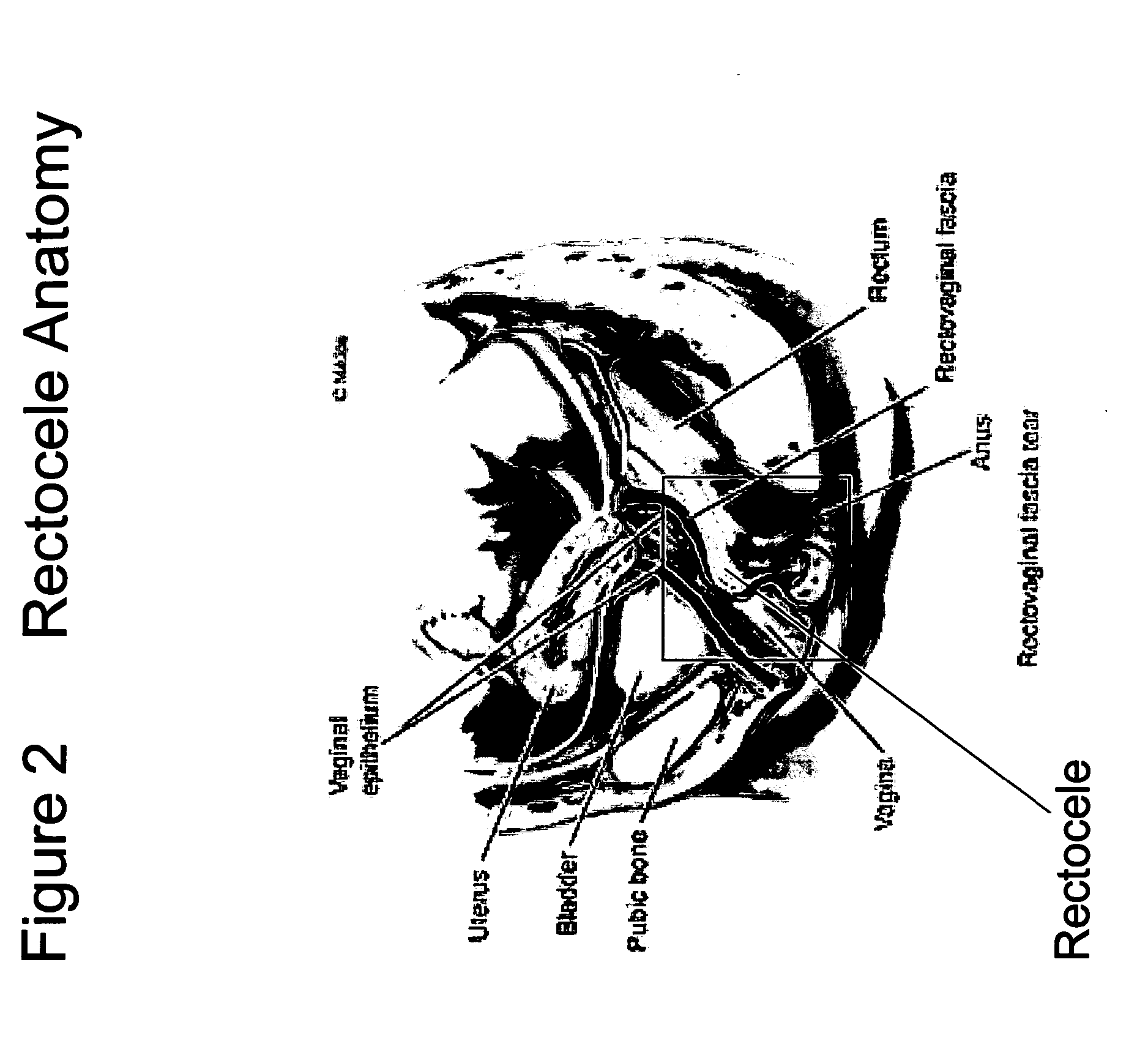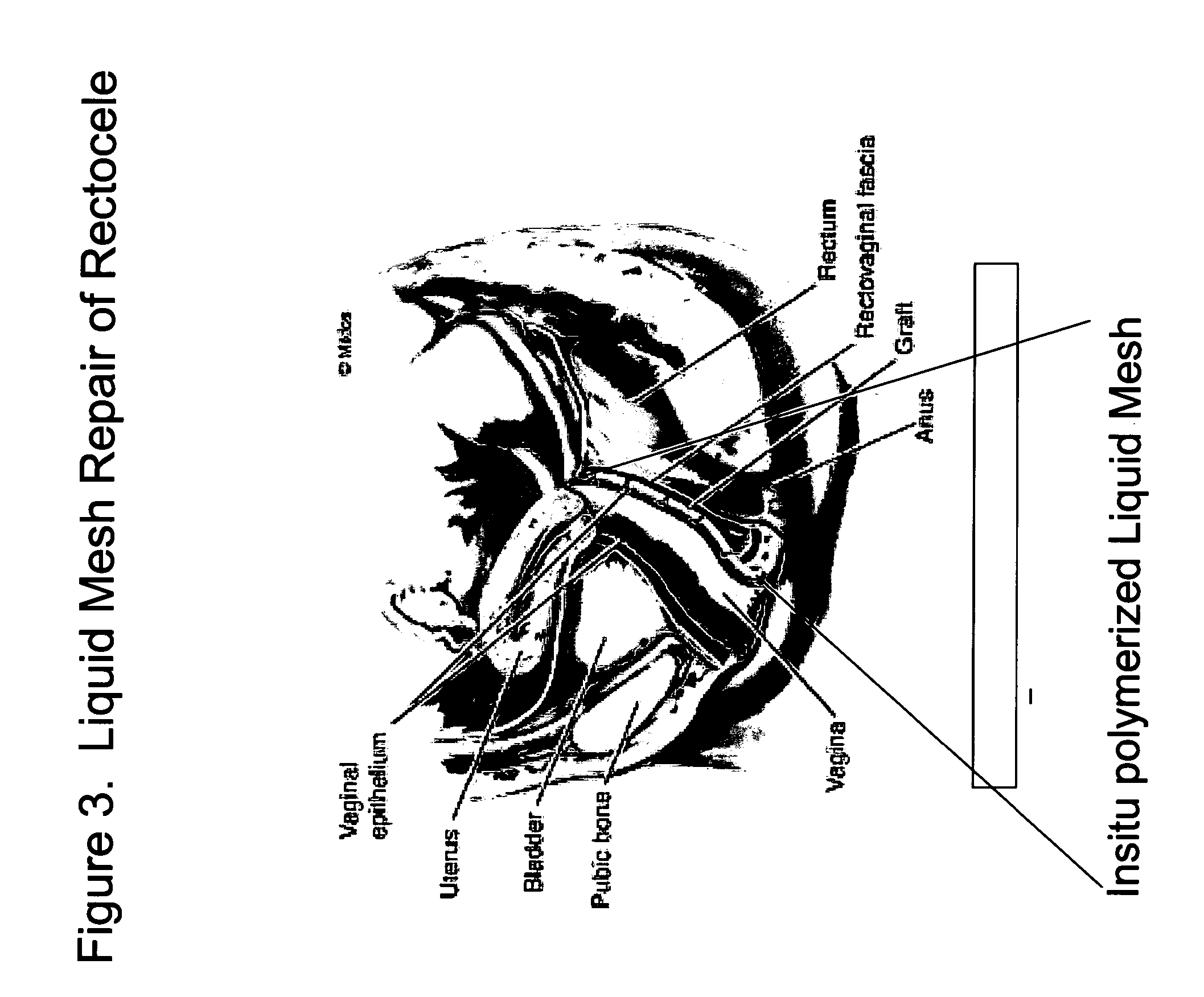Surgical adhesive and uses therefore
a technology of adhesives and adhesives, applied in the field of liquid polymer composition, can solve the problems of poor mechanical strength, few procedures actually use, adhesives that do not adhere well to wet tissue, etc., and achieve the effects of less erosive, controlled strength, and simple us
- Summary
- Abstract
- Description
- Claims
- Application Information
AI Technical Summary
Benefits of technology
Problems solved by technology
Method used
Image
Examples
synthesis examples
ADHESIVE SYNTHESIS EXAMPLES
[0042] All reagents were obtained from commercial catalogs, for example Aldrich Chemical.
example 1
Biodegradable In-Situ Polymerizing Implant (Lactated Trimethylolpropane)
[0043] A commercial polyether polyol, UCON 75-H450, obtained from Dow Chemical Co., and described as having a molecular weight of about 978 D, and a composition of about 25% propylene oxide monomers and 75% ethylene oxide monomers, and as being a diol, was dried by heating at 82 deg. C. for 6 hours at 2 Torr of pure nitrogen flowing at 1 cubic foot per hour. Trimethylolpropane (TMP) was lactated by mixing 269 g of TMP with 1486 g of 85% lactic acid and heating at 2 Torr of pure nitrogen flowing at 1 cubic foot per hour for 2 hours at 110 deg. C. and subsequently for 24 hours at 125 deg. C.1244 g of dried UCON 75-H-450 was mixed with 133 g of lactated TMP and heated at 82 deg. C. under nitrogen flow of 1 cubic foot per hour for 8 hours. Toluene diisocyanate (TDI) was subsequently added to obtain a theoretical NCO content of approximately 3.0 (i.e., enough to cap all of the free hydroxyl ends of the polyether pol...
example 2
In Situ Polymerizing Implant (Pure Polyethylene Glycol)
[0044] Certain polyols are highly hydrophilic, such a polyethylene glycol (PEG), and will swell and subsequently dissolve in the body. Carbowax 1000, a 1000 MW PEG, was dried according to the procedure of Example 1. 1269 g of dried Carbowax 1000 was mixed with 53.9 g of TMP and heated at 82 deg. C. for 8 hours under nitrogen flow of 1 cubic foot per hour. Subsequently, TDI was added to obtain a theoretical NCO content of 2.8, and the mixture was heated at 82 deg. C. for 24 hours under a nitrogen flow of 1 cubic foot per hour to obtain a liquid tissue adhesive. Storage was as in Example 1.
PUM
| Property | Measurement | Unit |
|---|---|---|
| Fraction | aaaaa | aaaaa |
| Time | aaaaa | aaaaa |
| Composition | aaaaa | aaaaa |
Abstract
Description
Claims
Application Information
 Login to View More
Login to View More - R&D
- Intellectual Property
- Life Sciences
- Materials
- Tech Scout
- Unparalleled Data Quality
- Higher Quality Content
- 60% Fewer Hallucinations
Browse by: Latest US Patents, China's latest patents, Technical Efficacy Thesaurus, Application Domain, Technology Topic, Popular Technical Reports.
© 2025 PatSnap. All rights reserved.Legal|Privacy policy|Modern Slavery Act Transparency Statement|Sitemap|About US| Contact US: help@patsnap.com



